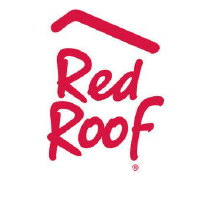
Baymont Inn & Suites
How much does Baymont Inn & Suites cost?
Initial Investment Range
$224,948 to $10,549,711
Franchise Fee
$33,950 to $62,450
The franchisee will operate a Baymont Inn & Suites guest lodging facility offering overnight accommodations and related services.
Enjoy our partial free risk analysis below
Unlock the full risk analysis to access 9 more categories covering 100+ risks.
Baymont Inn & Suites March 31, 2025 FDD Risk Analysis
Free FDD Library AI Analysis Date: August 19, 2025
DISCLAIMER: Not Legal Advice - For Informational Purposes Only. Consult With Qualified Franchise Professionals.
Franchisor Stability Risks
Start HereDisclosure of Franchisor's Financial Instability
Low Risk
Explanation
The franchisor, Baymont Franchise Systems, Inc. (Baymont), is a subsidiary of the publicly traded Wyndham Hotels & Resorts, Inc. (WHR), which guarantees Baymont's performance. The provided financial statements are for the parent company, WHR. While WHR appears financially stable as a large corporation, your direct agreement is with the subsidiary. The financial health of the subsidiary itself is not detailed, but its performance is backed by the parent guarantor.
Potential Mitigations
- Your accountant should review the guarantor's (WHR) audited financial statements in Exhibit D to assess its long-term stability and ability to support the system.
- It is wise to discuss with your attorney the strength and enforceability of the parent company's guarantee of the franchisor's obligations.
- A business advisor can help you understand the potential implications of a large, multi-brand parent company on the support and attention your specific brand receives.
High Franchisee Turnover
Medium Risk
Explanation
Item 20 data from 2022-2024 shows a consistent number of outlets leaving the system each year, primarily under the vague category 'Ceased Operations-Other Reasons' (27 in 2024, 25 in 2023). This represents an annual churn rate around 5% of the total U.S. system size. While not extreme, this consistent exit rate suggests you should investigate the reasons for these departures, as it could indicate underlying issues with profitability or franchisee satisfaction.
Potential Mitigations
- Speaking with a significant number of former franchisees listed in Exhibit E-2 is crucial to understand why they left the system; your attorney can help prepare questions.
- Your accountant should analyze the turnover rates in Item 20 over the three-year period to identify any negative trends.
- In your due diligence calls, it is advisable to ask current franchisees about their satisfaction and knowledge of others who have left the system.
Rapid System Growth
Low Risk
Explanation
The FDD shows steady growth, with the number of franchised outlets increasing from 521 at the start of 2023 to 547 at the end of 2024. As a large, established system under Wyndham, the support infrastructure appears capable of handling this moderate growth. The risk of support being diluted due to excessively rapid expansion seems low at this time.
Potential Mitigations
- Asking current franchisees about the quality and responsiveness of the franchisor's support systems is a valuable due diligence step.
- Your business advisor can help you evaluate whether the franchisor's described support infrastructure in Item 11 seems adequate for the system's size.
- A discussion with your attorney about the specific support obligations outlined in the Franchise Agreement can provide clarity on what is contractually required.
New/Unproven Franchise System
Low Risk
Explanation
Baymont and its parent, Wyndham Hotels & Resorts, Inc., are well-established entities with extensive experience in the hotel and franchising industries. The brand has been franchising since 2006 and has a large number of existing outlets. This is not a new or unproven system, which reduces risks associated with inexperienced management or an untested business model.
Potential Mitigations
- It's still prudent to review the executive team's experience in Item 2 with your business advisor to understand their background.
- Engaging with current franchisees can provide insight into how the franchisor's experience translates into effective support and system management.
- An attorney can help you confirm that the franchisor has complied with all state and federal disclosure requirements for an established system.
Possible Fad Business
Low Risk
Explanation
The Baymont brand is a well-established concept in the mid-market hotel segment of the hospitality industry, which is a mature market. The business model is not based on a new or fleeting trend, and there is a history of sustained consumer demand for these types of lodging facilities. Therefore, the risk of this being a fad business with limited long-term viability appears to be low.
Potential Mitigations
- A business advisor can help you research the long-term outlook for the mid-market hotel segment in your specific geographic area.
- It is beneficial to review the franchisor's marketing plans and system development information in Item 11 to assess their strategy for maintaining brand relevance.
- Your accountant can help you model financial performance based on the established nature of the industry.
Inexperienced Management
Low Risk
Explanation
The management team detailed in Item 2 consists of executives with extensive and long-term experience within Wyndham Hotels & Resorts and the broader hospitality industry. The risk associated with an inexperienced management team that lacks an understanding of franchising or hotel operations appears to be low for this system.
Potential Mitigations
- A review of the executive biographies in Item 2 with a business advisor can confirm their extensive history in the franchising and hospitality sectors.
- Asking current franchisees about their perception of the management team's competence and support provides valuable real-world context.
- Your attorney can help you understand the corporate structure described in Item 1 and how the management team relates to both the franchisor and its parent company.
Private Equity Ownership
Low Risk
Explanation
The ultimate parent company, Wyndham Hotels & Resorts, Inc., is a publicly traded corporation, not a private equity firm. While this structure has its own set of considerations, it does not present the specific risks typically associated with private equity ownership, such as a focus on short-term returns that might conflict with the long-term health of the franchise system.
Potential Mitigations
- Your accountant should review the parent company's public financial filings (e.g., 10-K reports) to understand its financial health and strategic priorities.
- It may be helpful to discuss with your attorney the implications of the franchisor's ability to assign the franchise agreement to a different owner in the future.
- A business advisor can help you understand the dynamics of being a franchisee within a large, publicly traded hotel company.
Non-Disclosure of Parent Company
Low Risk
Explanation
The FDD clearly identifies Baymont Franchise Systems, Inc. as the franchisor and its parent companies, Wyndham Hotel Group, LLC and Wyndham Hotels & Resorts, Inc. (WHR). Importantly, WHR, the ultimate parent, provides a Guaranty of Performance for the franchisor's obligations, and its audited financial statements are included. The corporate structure and its financial backing are transparently disclosed.
Potential Mitigations
- Your accountant should carefully review the provided financial statements of the parent guarantor, WHR, in Exhibit D.
- It is prudent to have your attorney review the specific language of the Guaranty of Performance to understand its scope and limitations.
- Confirming the relationship between the franchisor, its parent, and the guarantor with a business advisor can provide additional clarity.
Predecessor History Issues
Low Risk
Explanation
Item 1 discloses the franchisor's history and notes that it is part of the larger Wyndham system, which has a long history involving various predecessors for its many brands. However, for the Baymont brand specifically, the FDD does not indicate a recent acquisition from a predecessor or any related negative history that would be a direct concern. The franchisor's own history since 2006 is the primary focus.
Potential Mitigations
- Having your attorney review the corporate history in Item 1 is a good practice to ensure no predecessor issues are overlooked.
- When speaking with long-term franchisees, asking about their experience with the brand over time can reveal insights into its history.
- A business advisor can help research the public history of the parent company, Wyndham Hotels & Resorts, for additional context.
Pattern of Litigation
High Risk
Explanation
Item 3 discloses that the franchisor's parent, Wyndham Hotels & Resorts, Inc., is a defendant in two significant, ongoing class-action antitrust lawsuits. Plaintiffs allege that Wyndham and other major hotel companies conspired to fix hotel room prices through the use of specific revenue management software. While the franchisor denies the allegations, being named in such serious litigation presents a significant risk, potentially leading to financial instability, brand damage, or changes in required systems.
Potential Mitigations
- Your attorney must review the disclosures in Item 3 and explain the potential ramifications of this antitrust litigation on the franchisor and the system.
- It is critical to discuss with a business advisor how a negative outcome in these lawsuits could impact the brand's reputation and your investment.
- You should ask the franchisor about these lawsuits and any potential impact on the revenue management systems you will be required to use.
Disclosure & Representation Risks
Example Risk: Franchisee Financial Obligations
Blue Risk
Explanation
This risk involves the financial obligations that a franchisee must meet, including initial fees, ongoing royalties, and other required payments. Understanding these obligations is crucial for long-term success.
Potential Mitigations
- Carefully review the Franchise Disclosure Document (FDD) and consult with a franchise attorney to fully understand all financial commitments before signing.
- Conduct regular risk assessments
- Implement monitoring and reporting systems
Unlock Full Risk Analysis
Purchase the complete risk review to see all 102 risks across all 10 categories.
Financial & Fee Risks
Example Risk: Franchisee Financial Obligations
Blue Risk
Explanation
This risk involves the financial obligations that a franchisee must meet, including initial fees, ongoing royalties, and other required payments. Understanding these obligations is crucial for long-term success.
Potential Mitigations
- Carefully review the Franchise Disclosure Document (FDD) and consult with a franchise attorney to fully understand all financial commitments before signing.
- Conduct regular risk assessments
- Implement monitoring and reporting systems
Unlock Full Risk Analysis
Purchase the complete risk review to see all 102 risks across all 10 categories.
Legal & Contract Risks
Example Risk: Franchisee Financial Obligations
Blue Risk
Explanation
This risk involves the financial obligations that a franchisee must meet, including initial fees, ongoing royalties, and other required payments. Understanding these obligations is crucial for long-term success.
Potential Mitigations
- Carefully review the Franchise Disclosure Document (FDD) and consult with a franchise attorney to fully understand all financial commitments before signing.
- Conduct regular risk assessments
- Implement monitoring and reporting systems
Unlock Full Risk Analysis
Purchase the complete risk review to see all 102 risks across all 10 categories.
Territory & Competition Risks
Example Risk: Franchisee Financial Obligations
Blue Risk
Explanation
This risk involves the financial obligations that a franchisee must meet, including initial fees, ongoing royalties, and other required payments. Understanding these obligations is crucial for long-term success.
Potential Mitigations
- Carefully review the Franchise Disclosure Document (FDD) and consult with a franchise attorney to fully understand all financial commitments before signing.
- Conduct regular risk assessments
- Implement monitoring and reporting systems
Unlock Full Risk Analysis
Purchase the complete risk review to see all 102 risks across all 10 categories.
Regulatory & Compliance Risks
Example Risk: Franchisee Financial Obligations
Blue Risk
Explanation
This risk involves the financial obligations that a franchisee must meet, including initial fees, ongoing royalties, and other required payments. Understanding these obligations is crucial for long-term success.
Potential Mitigations
- Carefully review the Franchise Disclosure Document (FDD) and consult with a franchise attorney to fully understand all financial commitments before signing.
- Conduct regular risk assessments
- Implement monitoring and reporting systems
Unlock Full Risk Analysis
Purchase the complete risk review to see all 102 risks across all 10 categories.
Franchisor Support Risks
Example Risk: Franchisee Financial Obligations
Blue Risk
Explanation
This risk involves the financial obligations that a franchisee must meet, including initial fees, ongoing royalties, and other required payments. Understanding these obligations is crucial for long-term success.
Potential Mitigations
- Carefully review the Franchise Disclosure Document (FDD) and consult with a franchise attorney to fully understand all financial commitments before signing.
- Conduct regular risk assessments
- Implement monitoring and reporting systems
Unlock Full Risk Analysis
Purchase the complete risk review to see all 102 risks across all 10 categories.
Operational Control Risks
Example Risk: Franchisee Financial Obligations
Blue Risk
Explanation
This risk involves the financial obligations that a franchisee must meet, including initial fees, ongoing royalties, and other required payments. Understanding these obligations is crucial for long-term success.
Potential Mitigations
- Carefully review the Franchise Disclosure Document (FDD) and consult with a franchise attorney to fully understand all financial commitments before signing.
- Conduct regular risk assessments
- Implement monitoring and reporting systems
Unlock Full Risk Analysis
Purchase the complete risk review to see all 102 risks across all 10 categories.
Term & Exit Risks
Example Risk: Franchisee Financial Obligations
Blue Risk
Explanation
This risk involves the financial obligations that a franchisee must meet, including initial fees, ongoing royalties, and other required payments. Understanding these obligations is crucial for long-term success.
Potential Mitigations
- Carefully review the Franchise Disclosure Document (FDD) and consult with a franchise attorney to fully understand all financial commitments before signing.
- Conduct regular risk assessments
- Implement monitoring and reporting systems
Unlock Full Risk Analysis
Purchase the complete risk review to see all 102 risks across all 10 categories.
Miscellaneous Risks
Example Risk: Franchisee Financial Obligations
Blue Risk
Explanation
This risk involves the financial obligations that a franchisee must meet, including initial fees, ongoing royalties, and other required payments. Understanding these obligations is crucial for long-term success.
Potential Mitigations
- Carefully review the Franchise Disclosure Document (FDD) and consult with a franchise attorney to fully understand all financial commitments before signing.
- Conduct regular risk assessments
- Implement monitoring and reporting systems
Unlock Full Risk Analysis
Purchase the complete risk review to see all 102 risks across all 10 categories.











